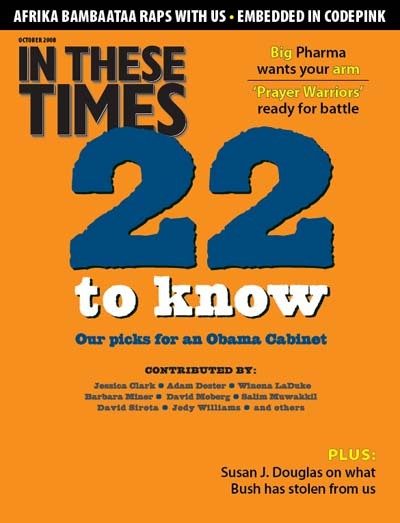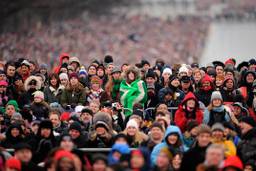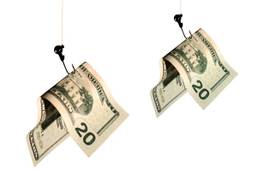
About halfway through Battle in Seattle, writer/director Stuart Townsend’s cinematic dramatization of the 1999 World Trade Organization (WTO) protests in Seattle, a group of activists are watching a local TV station’s coverage of the explosive events on the streets. Upon hearing the confrontations between the protesters and the police dubbed “The Battle in Seattle,” one of the activists derisively scoffs, “Battle in Seattle? Sounds like a monster truck show!”
The statement’s implicit critique – of a mainstream media that prefers hyping the salacious rather than examining the substance of complex events, thus reducing them to simplistic, binary clashes – is on-target. But it’s hard to overlook that this scornful line is delivered in a film that is itself titled “Battle in Seattle.”
It’s a microcosm for the film as a whole – a well-intentioned effort that ultimately misses the mark, covering its unconventional subject within a drearily conventional framework.
Battle in Seattle sounds like the type of movie that would warm the cockles of any leftist’s (or anarchist’s) heart. First-time director Townsend – an actor who you might (or might not) remember from such films as The Best Man and Queen of the Damned – has clearly done his homework. Though his film is not a documentary, Townsend does a good job outlining the consequences of the labor, environmental, agricultural and patent-law issues at stake in the WTO negotiations.
His protagonists are four direct-action protesters, played by Martin Henderson, Jennifer Carpenter, Michelle Rodriguez and Andre Benjamin, of the band OutKast. Townsend sketches them sympathetically (perhaps too sympathetically), accurately portrays some of their most effective tactics to disrupt the meetings and essentially endorses their dissent. His villains are superficial TV producers, indifferent trade reps, timid politicians and macho policemen, eager to beat the nonviolent protesters. What’s not to like?
Sadly, quite a bit. Townsend clearly wishes to counter the caricatures of direct-action anarchists regularly put forth in the media – best typified by New York Times’ Thomas Friedman’s dismissal of the Seattle protesters as “a Noah’s Ark of flat-earth advocates.” (This, of course, came before Friedman himself penned a book titled The World Is Flat.) But in correcting these cartoonish phantoms of the elite’s imagination, Townsend creates some of his own, drawing characters who are impossibly good: intelligent, kind, committed, moral and eminently reasonable.
The problem isn’t that such characterizations are untrue; the above adjectives would certainly fit the direct-action activists I’ve met. But, at various times, so might a few others: neurotic, intense, immature, petty, self righteous. (Many also had an admirable indifference – if not outright hostility – toward personal appearance and hygiene that, despite the best efforts of the film’s costume designer, the phenomenally good-looking cast of Battle in Seattle can’t quite pull off.)
Worse than a crime against verisimilitude, this one-dimensional characterization is a dramatic mistake. There’s plenty of conflict in Battle in Seattle, but it is nearly completely external – between police and protesters, “good” NGO representatives and indifferent WTO bureaucrats, etc. But these figures almost all arrive on screen already fully formed, leaving the viewer with lofty ideals to aspire to, not lived (and ongoing) struggles to relate to.
What’s more, it leavens the film with a tediously dull earnestness that does a disservice to the very protesters Battle in Seattle means to salute. Say what you want about the international grassroots movement that’s arisen to disrupt the anti-democratic practices of elite institutions like the WTO, but its participants are rarely (solely) earnest and never dull. (Indeed, I would say they are objectively pro-fun.) These activists might put their bodies in front of police truncheons to express their beliefs, but many of them do so while dressed in ridiculously imaginative costumes, all the while screaming dada chants, like “The Pizza. United. Will Never Be Divided,” or the delightfully meta “Three Word Chant! Three Word Chant!”
The only time such playfulness appears on screen in Battle in Seattle is when Townsend intercuts footage of the actual WTO protests with his reenactments. The boisterousness and ingenuity on display by the real-life participants arrive like breaths of fresh air, providing all too fleeting relief from the staid conventions that the film’s fictional narrative adheres to.
Chief among those conventions is Townsend’s shameless use of melodrama, which reaches a nadir of banality in a subplot involving a cop (played by Woody Harrelson) and his pregnant wife (Charlize Theron), who is caught up in a swirl of protesters and – in an “ironic twist” – is punched by another cop in the stomach. When she (inevitably) suffers a miscarriage, one half expects Townsend to fully embrace cliché and have her sob, “And I was going to name her Justice!”
Townsend uses the same schtick with his protesting protagonists, giving them dramatic backstories that help “explain” why they are so gosh darned angry at the WTO. (Apparently, it wouldn’t be believable enough for them to be motivated solely by the existence of corporate sweatshops, the extinction of species or a world in which the richest 1 percent of the population has roughly the same amount of income as the poorest 60 percent.) They must instead have been “personally” affected by the WTO’s policies.
In the case of the lead organizer Jay (Henderson), this means that his brother was killed while protesting a timber company. (This is presumably based on the real-life death of the EarthFirst! activist David Chain, who was killed in 1998 when a logger felled a tree that landed on top of him.) As the film’s production notes explain, “For these protesters, this is very personal and the stakes are higher than mere politics.”
But with this elevation of personal grievances over “mere politics,” Battle in Seattle follows the same logic of the neoliberal ideology at the heart of groups like the WTO, an ideology that privileges personal freedom (and individual wealth) over any collective political action that aims to redistribute wealth or natural resources more equitably and sustainably.
Of course, personal freedom and more equitable wealth are not necessarily at odds with one another. Indeed, they are mutually reinforcing. But the film’s focus on the personal rather than the political obscures the protests’ most important legacy.
This comes through clearly at the film’s end, which shows our four protagonists walking toward the horizon, together again, after three of them have been released from jail. The scene has the feel of a comedy, as it’s classically defined: a re-uniting of the social world, after it has been torn apart.
But what makes the WTO protests most significant – and this isn’t meant to belittle or slight the very real and empowering sense of solidarity that its individual participants may have experienced – is their tragic element, again as classically defined. The protesters ruptured the WTO’s “New World Order,” creating a break that exists to this day. (There have been very few agreements reached at WTO meetings since Seattle.) It’s only by focusing on this initial political fissure that we can see the slim utopian space, where, perhaps, we can truly be ourselves.








